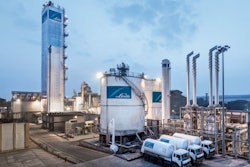If you watch the news every night, you probably think that manufacturing in the U.S. is on the verge of death.
Fortunately, that’s not the case.
I've been active in economic development for more than 30 years, and I don’t see an industry on its last legs. I see an increasingly efficient system that’s reshoring jobs and creating more opportunities for growth than the public might think.
The New Face Of Manufacturing
The black-and-white images of Henry Ford’s human-filled production line are a world away from the reality of manufacturing in 2017. Of manufacturing jobs lost between 2000 and 2010, 85 percent were due to technology-enabled automation, not companies fleeing the country. While that illuminates a significant national issue revolving around how to "skill up" unskilled workers, it doesn't mean manufacturing is in danger of disappearing from the U.S.
As jobs for unskilled manufacturing workers in factories dropped precipitously, manufacturing positions for workers with graduate degrees grew substantially — a 32 percent increase since 2000. Today, a country like the U.S. that pays higher wages can now profitably get back into the manufacturing race due to the cost advantages of automation and the ability to have skilled workers manage the outputs that previously were assigned to more than one person.
But what about the upfront capital costs associated with cutting-edge technology? As Matthew Rendall of OTTO Motors wrote in his TechCrunch piece, most automated equipment actually pays for itself within a year. And as more companies incorporate high-tech machinery into their production processes, today’s unskilled workers will be called upon to fill more skilled job openings.
It must become a national priority to dedicate the resources required to enhance the skills of our workforce so they align with the innovative practices that will further accelerate the modernization of manufacturing in America.
Creating A Better Competitive Environment
Automation’s spread not only brings jobs back, but also makes the U.S. a more attractive manufacturing location for global companies. According to an opinion piece by Harry Moser of the Reshoring Initiative, offshore factory labor can be more expensive than most people realize, especially when factoring in the total cost of ownership, including freight, duty, carry cost of inventory, and delivery.
There's also a trend of companies producing products close to or within the marketplace they're targeting for sales. This is advantageous because it reduces transportation costs and allows products to get to consumers more quickly.
Some companies have already begun shifting their manufacturing focus back to America. Missouri, for instance, is host to booming offshore manufacturers.
Trans-Lux, a manufacturer of high-end scoreboards, recently moved its production back to the U.S. from China. As the president of the company told CNN, "it makes economic sense." Additionally, Hartmann, which entered the U.S. market by purchasing a vacant 334,000-square-foot industrial facility that will start operating this year, is bringing 50 new jobs to the state.
As manufacturing continues to advance, more of these efficient factories will start appearing in American towns, creating hundreds of jobs in the empty shells that once employed thousands.
So what disruptive techniques can manufacturing executives employ to create more efficient production operations, take advantage of new technologies, and become more attractive to skilled workers?
1. Partner With Universities
Universities provide manufacturers with opportunities to find creative solutions to existing problems and scout upcoming talent. If a direct partnership with a university isn't possible, get involved with a local innovation community. With automation taking over many manual roles, having the most innovative staff is becoming critical in order to compete. Universities bring bigger talent pools and give manufacturers a closer look at candidates outside of a formal hiring process, allowing them to tap into the creativity of the next generation.
Some companies have already turned to such partnerships to help deal with new problems. When presented with the challenge of developing a way to detect the arrival of subatomic particles and photons by the U.S. Department of Energy, Incom Inc. turned to three universities across the country for help tackling the endeavor.
Leaders of three other manufacturing companies on a panel with Incom Inc.'s CEO at last year's Manufacturing Summit & Excellence Awards, sponsored by the Worcester Business Journal, also praised the opportunities that arise from partnering with universities.
2. Prioritize Smarter Smart Training
Whether you're retraining an existing team on new technologies or training new employees for existing efficiencies, proper education in manufacturing is essential. Local community colleges provide excellent resources for current staffers to take a few classes that will help their on-the-job performance.
Many instructors in such programs create real-life scenarios that provide hands-on training and feedback that are essential for success in a manufacturing environment. Scenarios and time with an instructor also allow employees to revamp their communication processes and learn to articulate new vocabularies that may come along with new technology, giving workers a boost in soft skills along with their tech know-how.
3. Become Even More Cost Competitive
Ultimately, decisions on where to manufacture come down to cost. That doesn’t just mean revenue minus materials and labor, though. It also means the quality of work, the long-term viability of the production methods, and the long-term value of investing in the local community
More efficient, cost-effective processes are keeping American costs low and increasing the competitiveness of U.S. manufacturers around the world. The more American manufacturers can automate and refine, the better they can compete with labor in China and other less costly countries.
Manufacturing isn’t dead — it’s evolving. Automation and machines have created a child industry distinct from its parent but with far more staying power. If American manufacturers can continue to provide the most reliable and efficient long-term product, manufacturing jobs will continue to come back home to American towns.
With more than 30 years of experience leading regional and state economic development initiatives, Steve Johnson, CEO of Missouri Partnership, works with manufacturing companies as they look at U.S. locations for expansion and investment.






















